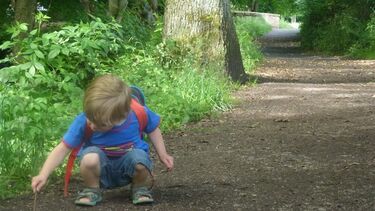The place-keeping research group

What is place-keeping?
Place-keeping is the long-term and flexible management of green and open spaces to ensure they can be enjoyed by all users now and in the future. The place-keeping research group brings researchers and non-academic partners from different sectors together to exchange ideas and good practice for effective long-term management of our green and open spaces.
Download the Partnerships Handbook: A Guide to Good Place-Keeping (PDF, 1837 KB)
Dimensions of place-keeping
The ongoing work of the place-keeping group shows that there are a number of dimensions of place-keeping. These are interdependent dimensions that don’t stand in isolation of one another. We present these dimensions as a set of questions:
Partnership
How do people work together to do place-keeping?
What makes a good partnership?
Funding
How much funding is available and what are the funder's requirements?
What is meant by 'good value'?
Design and Management
Does the design of a place take its long term management into account?
How can the design and management processes be more closely aligned?
Governance
Who does place-keeping?
Who makes the decisions?
Policy
What are the drivers behind policies?
How are policies put into practice?
Evaluation
How do you measure place-keeping in practice?
Whose opinion counts? What is meant by 'good place-keeping'?
Communication
Who needs to know place-keeping is happening?
How are place-keeping activities shared with different stakeholders?
Who we are
The place-keeping research group is led by Dr Nicola Dempsey.
Collaborators (staff and students):
The group incorporates a range of non-academic partners including the Sheffield Green Spaces Forum, National Federation of Parks and Green Space (UK) and Green Estate (Sheffield).
PhD students Yuhan Meng, Tanvir Hasan and Hanyu Qi are all doing work exploring aspects of place-keeping.
Associated group members include fellow Sheffield academics Mel Burton, Nathan Edwards, Dr Elisa Olivares and Dr Camilla Allen.
International academic collaborators include Dr Jinvo Nam, Dr Nurfadilah Kurzi and Dr Wanida Numsuk.
Research outputs
Qi, H., Dempsey, N., & Cameron, R. (2024) Seeing the forest for the trees? An exploration of the Miyawaki forest method in the UK. Arboricultural Journal, 1–13. https://doi.org/10.1080/03071375.2024.2394355
Numsuk, W. and Dempsey, N. (2024) Unveiling the Depths: Unravelling Stakeholder Values in the Landscape of Bangkok’s Urban Waterways. Sustainability, 16, 7117. https://doi.org/10.3390/su16167117
Dempsey, N. and Nam, J. (2024) Urban parks in crisis…again? A historical examination of the political, economic and social context of UK parks. Landscape Ecol Eng (2024). https://doi.org/10.1007/s11355-024-00597-7
Dempsey, N. (2023) The Sheffield street tree dispute: a case of ‘business as usual’ urban management? Journal of Environmental Planning and Management https://doi.org/10.1080/09640568.2023.2201965
Dobson, J. and Dempsey, N. (2021) Known but not done: how logics of inaction limit the benefits of urban green spaces, Landscape Research, 46(3): 390-402, DOI: 10.1080/01426397.2020.1864819
Dempsey, N., Martinez Velarde, C.L., Samuel, M., Bakshi, Y. and Baradi, M. (2020) From river to Riverfront: how meanings and cultural heritage change. The case of the Sabarmati Riverfront Project, Ahmedabad, Gujarat. Town Planning Review, https://doi.org/10.3828/tpr.2020.89
Nam, J. and Dempsey, N. (2020) Acceptability of income generation practices in 21st century urban park management: The case of city district parks, Journal of Environmental Management, 264: 109948 https://www.sciencedirect.com/science/article/pii/S0301479719316664?dgcid=author

